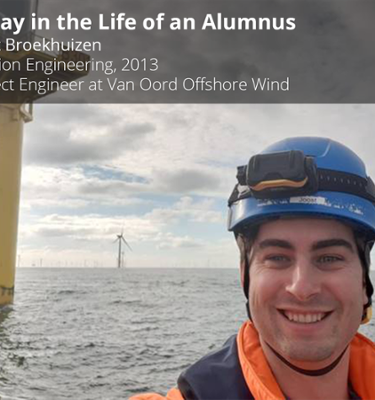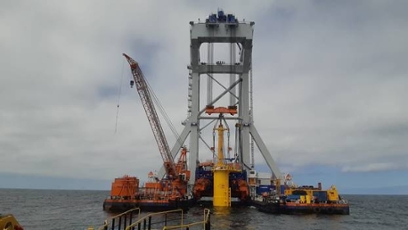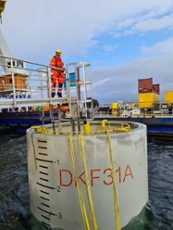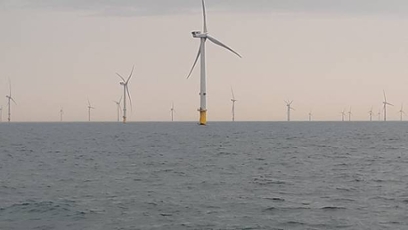Aviation Academy
JOOST BROEKHUIZEN AS PROJECT ENGINEER @ VAN OORD OFFSHORE WIND
Testimonial

In 2013, Joost graduated from the Aviation Engineering track. After that, Joost studied Aerospace Engineering at TU Delft. Currently, he is working as a Project Engineer at Van Oord Offshore Wind . He will tell us something about his experiences after graduation and his outlook on the future.
I liked the way of working in the projects, where a new technology is introduced
Joost Broekhuizen - Graduated in 2013 from the Aviation Engineering track
How did you get your current job?
Via a career event my interest was awakened towards the offshore industry, where the pace of technological evolution seems to go faster than in the aviation industry. I was introduced to marine contractors who design and operate their custom made vessels. The offshore industry is one where everything gets bigger, better and faster every year. With the climate change being higher on the political agendas of countries, the offshore wind is booming. In the Netherlands, there is nowadays almost 2.5 GW of installed wind power in our seas, where more than 10 GW is to be installed up until 2030. Lots of jobs need fulfillment to realise this, with many technical solutions to be invented.
What are your daily operations?
At Van Oord, a project engineer gets placed into projects to perform various tasks. I started in the execution phase of a three-legged jacket foundation installation project, where I made sure offshore installation kept on going, solving any kind of problem. After completion, I helped to solve technical queries in after-sales, which was more a typical desk job. I then proceeded with organising and executing some offshore interventions for a foundation installation project in Denmark, and after that I assisted at a project based in Vlissingen. I will now start with the preparation phase of a project in Germany, being firstly involved in risk assessment and mitigation and planning activities. This will shift to actually prepare installation methods of foundations and inter array cables. After preparation, the project team will move to Germany for a year to actually start the installation. The different jobs described above all happened in only two years, within the same company.
What do you like the most at your job?
The offshore wind is a new industry, which gives room for new inventions which can be implemented fast. At every project, new inventions are being tested and lessons are introduced which are to be implemented in the future projects. Therefore, there are virtually no limits of the impact of your work. Further, as a project engineer, you gain a very broad set of experiences, and you can specialise in subjects to your liking.
Where do you see yourself in 5 years?
Within these five years, it’s possible for a project engineer to learn the start of a project during tendering, to the very end of the after sales processes. There are many opportunities to gain more responsibilities if you prove yourself right, or shift sideways to ship design and operation, or the foundation or cable departments. I see myself ending up in the foundation design department, calculating new designs for the ever-increasing size of offshore wind turbines, trying to make the foundations as light as possible, with continuously updating innovations learned within the industry
What did you like the most from your education that helps you out nowadays in your work?
I liked the way of working in the projects, where a new technology is introduced. I learned how to work with it and was challenged to improve it. My education further helped me in the general ways of working for a company working with technological challenges.
Are you still connected with the Aviation Academy?
As my shift towards a different industry made me more interested in other communities, it’s still valuable to sometimes get back to your roots and learn how the aviation industry is doing.


